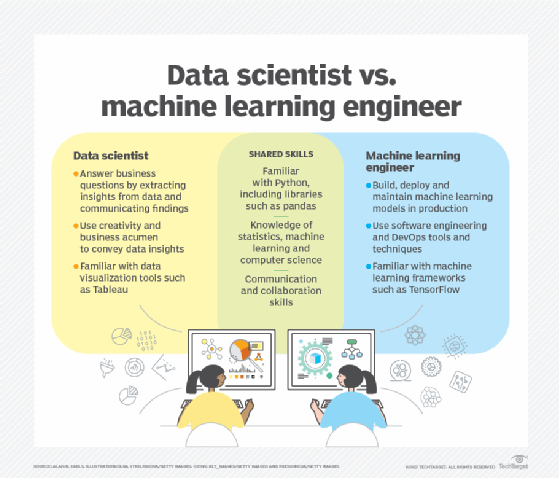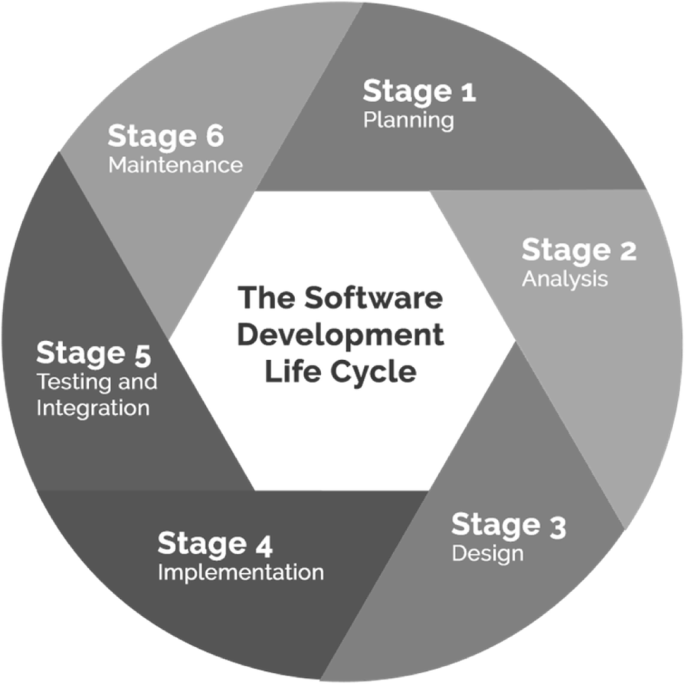All Categories
Featured
Table of Contents
- – How To Become A Machine Learning Engineer & Ge...
- – Some Known Facts About How To Become A Machine...
- – Top Guidelines Of Top 20 Machine Learning Boo...
- – Not known Details About Why I Took A Machine ...
- – The Machine Learning Engineering Course For ...
- – The smart Trick of Generative Ai Training Th...
- – How To Become A Machine Learning Engineer Th...
Some people believe that that's unfaithful. If someone else did it, I'm going to utilize what that person did. I'm compeling myself to assume with the possible services.
Dig a little bit deeper in the math at the beginning, just so I can build that structure. Santiago: Ultimately, lesson number seven. This is a quote. It states "You need to understand every detail of a formula if you want to utilize it." And after that I say, "I think this is bullshit advice." I do not think that you need to recognize the nuts and bolts of every formula prior to you use it.
I would certainly have to go and examine back to actually obtain a far better intuition. That does not suggest that I can not fix points utilizing neural networks? It goes back to our arranging instance I assume that's simply bullshit suggestions.
As a designer, I have actually functioned on numerous, several systems and I've used numerous, lots of things that I do not understand the nuts and bolts of just how it functions, despite the fact that I understand the influence that they have. That's the final lesson on that thread. Alexey: The amusing point is when I assume concerning all these collections like Scikit-Learn the formulas they use inside to implement, for instance, logistic regression or another thing, are not the like the formulas we examine in device learning classes.
How To Become A Machine Learning Engineer & Get Hired ... Things To Know Before You Buy
So even if we attempted to learn to obtain all these essentials of equipment learning, at the end, the algorithms that these collections use are different. ? (30:22) Santiago: Yeah, absolutely. I think we require a great deal more materialism in the market. Make a great deal even more of an influence. Or concentrating on providing worth and a little bit much less of purism.

By the means, there are two different courses. I generally speak with those that wish to operate in the sector that intend to have their impact there. There is a path for researchers and that is completely various. I do not dare to discuss that due to the fact that I do not know.
However right there outside, in the industry, materialism goes a long way for certain. (32:13) Alexey: We had a remark that claimed "Really feels more like motivational speech than speaking concerning transitioning." Perhaps we need to change. (32:40) Santiago: There you go, yeah. (32:48) Alexey: It is a great motivational speech.
Some Known Facts About How To Become A Machine Learning Engineer (2025 Guide).
One of the things I desired to ask you. Initially, let's cover a couple of points. Alexey: Allow's begin with core devices and frameworks that you need to discover to really transition.
I understand Java. I recognize just how to utilize Git. Maybe I recognize Docker.
Santiago: Yeah, absolutely. I assume, number one, you must begin finding out a little bit of Python. Because you currently understand Java, I do not believe it's going to be a big change for you.
Not since Python is the same as Java, yet in a week, you're gon na get a lot of the distinctions there. Santiago: After that you get particular core devices that are going to be used throughout your whole job.
Top Guidelines Of Top 20 Machine Learning Bootcamps [+ Selection Guide]
That's a collection on Pandas for data control. And Matplotlib and Seaborn and Plotly. Those three, or among those 3, for charting and presenting graphics. You obtain SciKit Learn for the collection of maker knowing formulas. Those are devices that you're going to have to be making use of. I do not advise simply going and learning more about them unexpectedly.
We can discuss details programs later on. Take among those programs that are going to start presenting you to some issues and to some core concepts of equipment knowing. Santiago: There is a course in Kaggle which is an intro. I do not bear in mind the name, however if you most likely to Kaggle, they have tutorials there free of charge.
What's good about it is that the only need for you is to understand Python. They're mosting likely to present an issue and inform you how to use decision trees to fix that specific trouble. I think that procedure is exceptionally powerful, since you go from no machine finding out history, to recognizing what the trouble is and why you can not address it with what you understand right now, which is straight software application engineering methods.
Not known Details About Why I Took A Machine Learning Course As A Software Engineer
On the other hand, ML designers concentrate on structure and deploying maker learning models. They concentrate on training designs with information to make forecasts or automate tasks. While there is overlap, AI designers handle even more diverse AI applications, while ML designers have a narrower focus on artificial intelligence algorithms and their useful application.

Maker knowing designers concentrate on establishing and deploying device knowing designs into manufacturing systems. On the various other hand, data scientists have a more comprehensive role that includes data collection, cleansing, exploration, and building versions.
As organizations progressively adopt AI and artificial intelligence technologies, the need for experienced experts expands. Artificial intelligence designers work on sophisticated tasks, contribute to innovation, and have affordable wages. Success in this field requires continual knowing and maintaining up with developing modern technologies and methods. Artificial intelligence duties are usually well-paid, with the potential for high gaining possibility.
ML is essentially various from traditional software growth as it concentrates on teaching computer systems to learn from data, rather than programming specific regulations that are performed methodically. Unpredictability of end results: You are most likely utilized to creating code with foreseeable outputs, whether your feature runs once or a thousand times. In ML, nonetheless, the outcomes are much less particular.

Pre-training and fine-tuning: Just how these models are educated on huge datasets and then fine-tuned for particular tasks. Applications of LLMs: Such as text generation, sentiment analysis and info search and access.
The Machine Learning Engineering Course For Software Engineers Statements
The capability to handle codebases, merge changes, and deal with problems is equally as crucial in ML growth as it remains in conventional software tasks. The skills established in debugging and testing software applications are extremely transferable. While the context may transform from debugging application logic to determining concerns in information handling or design training the underlying principles of organized investigation, hypothesis screening, and iterative improvement are the same.
Device understanding, at its core, is greatly dependent on stats and likelihood concept. These are critical for comprehending how algorithms find out from data, make predictions, and review their efficiency.
For those thinking about LLMs, a detailed understanding of deep understanding designs is valuable. This includes not only the mechanics of semantic networks yet additionally the architecture of certain models for different usage situations, like CNNs (Convolutional Neural Networks) for photo handling and RNNs (Frequent Neural Networks) and transformers for sequential information and natural language handling.
You should recognize these concerns and find out strategies for identifying, reducing, and communicating about predisposition in ML designs. This consists of the possible impact of automated decisions and the honest ramifications. Numerous models, particularly LLMs, need substantial computational sources that are commonly given by cloud systems like AWS, Google Cloud, and Azure.
Building these abilities will not just help with a successful shift into ML yet also make certain that programmers can contribute successfully and responsibly to the improvement of this dynamic area. Concept is essential, yet absolutely nothing beats hands-on experience. Beginning working on tasks that enable you to use what you've learned in a sensible context.
Develop your projects: Start with easy applications, such as a chatbot or a message summarization device, and gradually raise intricacy. The field of ML and LLMs is rapidly evolving, with new breakthroughs and technologies emerging routinely.
The smart Trick of Generative Ai Training That Nobody is Discussing
Join areas and forums, such as Reddit's r/MachineLearning or community Slack channels, to talk about concepts and get guidance. Go to workshops, meetups, and meetings to attach with other professionals in the field. Contribute to open-source tasks or create blog posts concerning your knowing trip and projects. As you gain experience, start trying to find chances to incorporate ML and LLMs into your work, or seek new roles focused on these innovations.

Vectors, matrices, and their function in ML formulas. Terms like version, dataset, features, labels, training, inference, and recognition. Data collection, preprocessing methods, design training, evaluation procedures, and release considerations.
Decision Trees and Random Woodlands: Instinctive and interpretable designs. Matching problem types with proper designs. Feedforward Networks, Convolutional Neural Networks (CNNs), Recurrent Neural Networks (RNNs).
Continual Integration/Continuous Release (CI/CD) for ML workflows. Version surveillance, versioning, and performance tracking. Spotting and resolving changes in design efficiency over time.
How To Become A Machine Learning Engineer Things To Know Before You Buy

You'll be presented to three of the most relevant components of the AI/ML discipline; monitored discovering, neural networks, and deep understanding. You'll comprehend the differences between traditional programs and machine discovering by hands-on growth in monitored understanding prior to developing out intricate distributed applications with neural networks.
This course acts as a guide to device lear ... Show More.
Table of Contents
- – How To Become A Machine Learning Engineer & Ge...
- – Some Known Facts About How To Become A Machine...
- – Top Guidelines Of Top 20 Machine Learning Boo...
- – Not known Details About Why I Took A Machine ...
- – The Machine Learning Engineering Course For ...
- – The smart Trick of Generative Ai Training Th...
- – How To Become A Machine Learning Engineer Th...
Latest Posts
Best Free Udemy Courses For Software Engineering Interviews
5 Ways To Use Chatgpt For Software Engineer Interview Preparation
Free Online System Design Courses For Tech Interviews
More
Latest Posts
Best Free Udemy Courses For Software Engineering Interviews
5 Ways To Use Chatgpt For Software Engineer Interview Preparation
Free Online System Design Courses For Tech Interviews